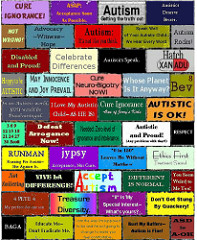When I first read this job advert, I began to weep. I didn’t know anyone else understood what it was like to be this sort of person – to have this kind of mind – much less that anyone out there valued it.
Miscellaneous Vacancies
Are you:
• A creative, articulate scientist with research experience in biological, medical, chemical, electrical, mechanical or materials engineering disciplines?
• A lateral thinker, passionate about science and your own discipline, yet able to think outside of the box and make connections to other fields?
• A great listener with highly developed interpersonal skills, with career goals in commercialisation, technology transfer or business development and able to manage relationships with clients in a highly fluid environment, respect confidentiality and work with people across all levels of an organisation?Do you:
• Thrive on change and derive great pleasure from making connections between seemingly unrelated ideas?
• Get a buzz from finding new routes that others have not trodden before and yet would be comfortable with working collaboratively to develop your ideas and those of others without expectation of extra personal or monetary recognition?
Sadly, the closing date for the position had long since passed by the time I read it. But like so many dangerous ideas, knowing that such a thing even existed reverberated up and down my mental timelines.
In graduate school, the entomology professors didn’t understand how or why I kept making connections between ecology and learning disabilities. Such details were certainly not necessary to researching insect behaviour, no matter how much they might apply to some of the students in the department.
In a recent New York Times article, “Innovative Minds Don’t Think Alike”, Janet Rae-Dupree describes the “so-called curse of knowledge” where experts are so familiar with traditional means of getting things done that their expertise gets in the way of innovation. The article also describes how bringing in people who have other fields of knowledge, but who are not bogged down by the specialist jargon that reinforces and limits the current understanding, can free up boxed-in thinking and create new ideas.
It’s a conundrum how organisations (academic or otherwise) claim to want innovation, but are resistant to novel suggestions that often go against what everyone knows will work. But as the saying goes, “If you always do what you’ve always done, you’ll always get what you always got.”
More recently, an education professor was not only unfazed by my entomological background, but thought it “wonderful” and mentioned that Jean Piaget had worked on snail behaviour before working with children. I was flabbergasted. I so rarely get such unexpected, sincere kudos that such a moment can keep my spirits buoyed for weeks.
“Thinking outside the box” has always been easy – rather, it’s trying to figure out just what the hell others perceive as The Box that’s hard. I’ve spent decades struggling to understand what people’s boxes are like, how they construct and use them, where the boxes came from, and when I am supposed to intuit and conform to those boxes.
Unfortunately, because of everyone’s jargon-constrained knowledge boxes, it’s hard to describe my own kind of lateral, inter-disciplinary thinking. Trying to convince others that they can benefit from such seems almost beyond my abilities, as I’m not a natural salesperson who can schmooze and easily persuade others.
Meanwhile, I’m still buzzing about, looking for a good niche. At least now I have a few more um, “buzz-words” that will help me describe what I can offer.











You must be logged in to post a comment.